Embark on a journey to discover the dark side of Florida’s avian world, where 15 species of black birds soar the skies and call the Sunshine State their home.
From the striking appearance of the American Crow to the melodic songs of the Common Grackle, each species has its own unique personality and story.
Get ready to be captivated by the mysterious beauty of these dark-feathered creatures and learn about their fascinating behaviors, habitats, and migration patterns.
Keep reading to explore the 15 types of black birds in Florida.
| Image | Name |
|---|---|
 | Red-winged Blackbird |
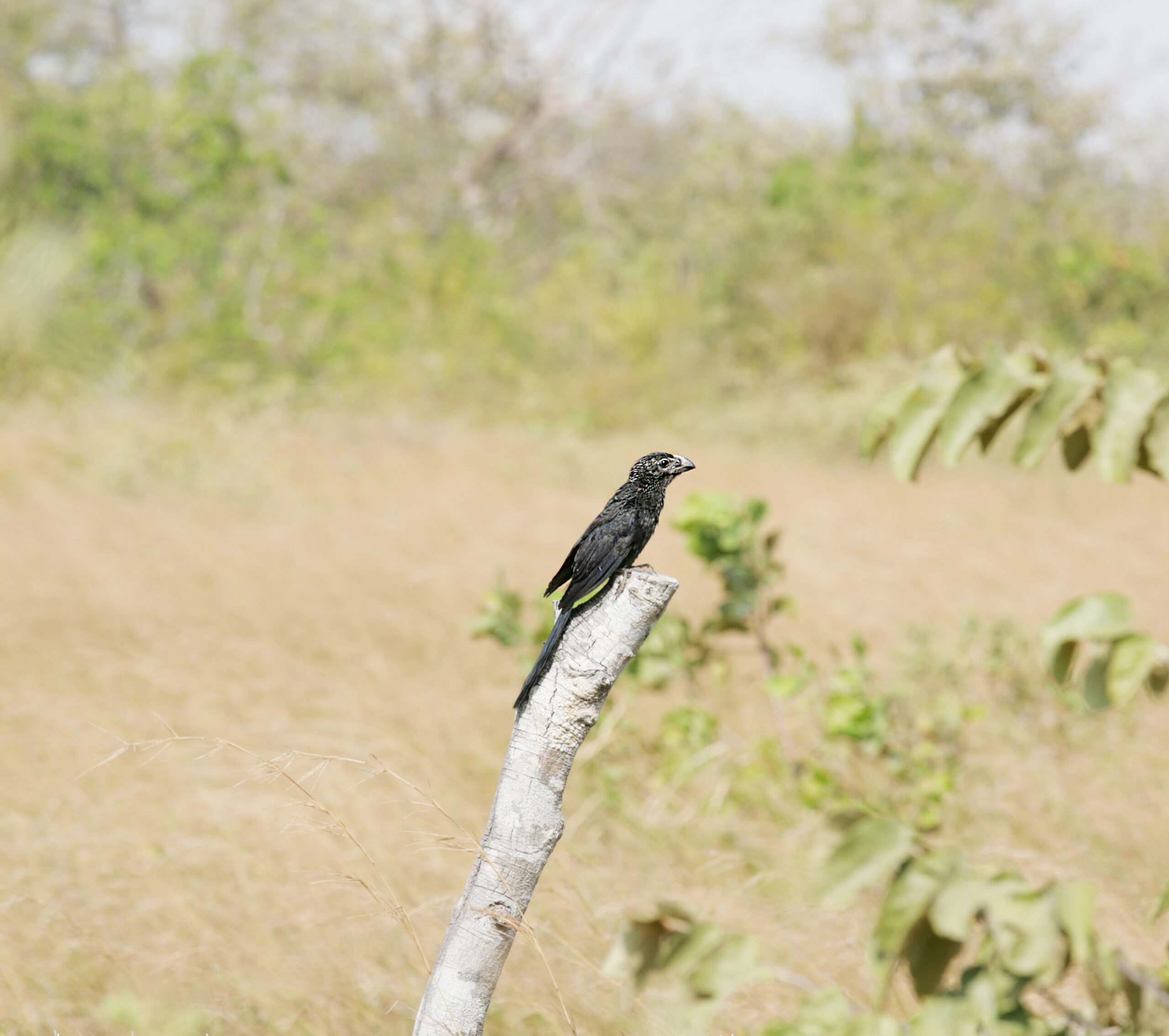 | Smooth-Billed Ani |
 | Brewer's Blackbird |
 | White-crowned Pigeon |
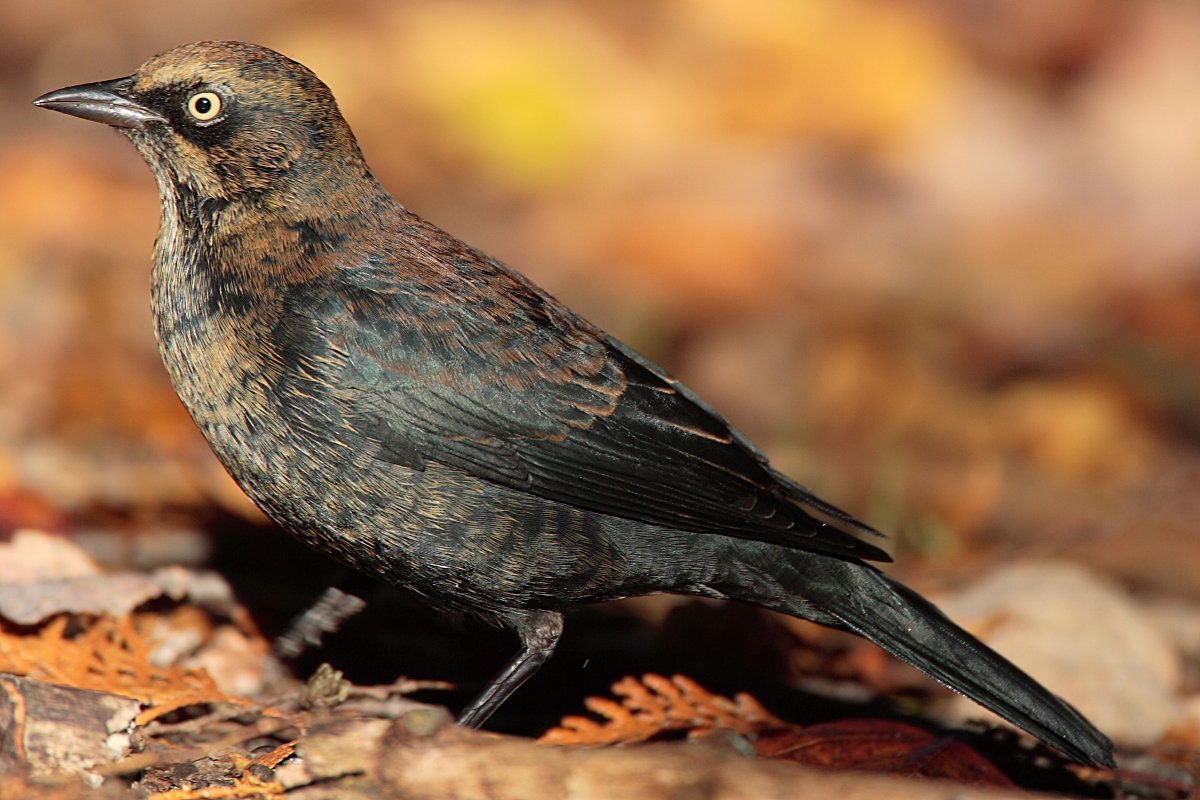 | Rusty Blackbird |
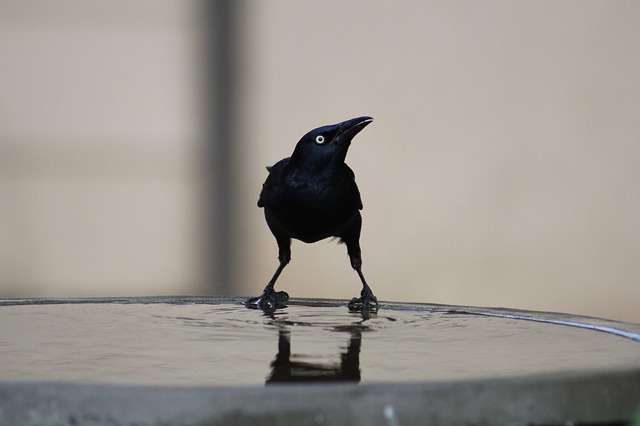 | Common Grackle |
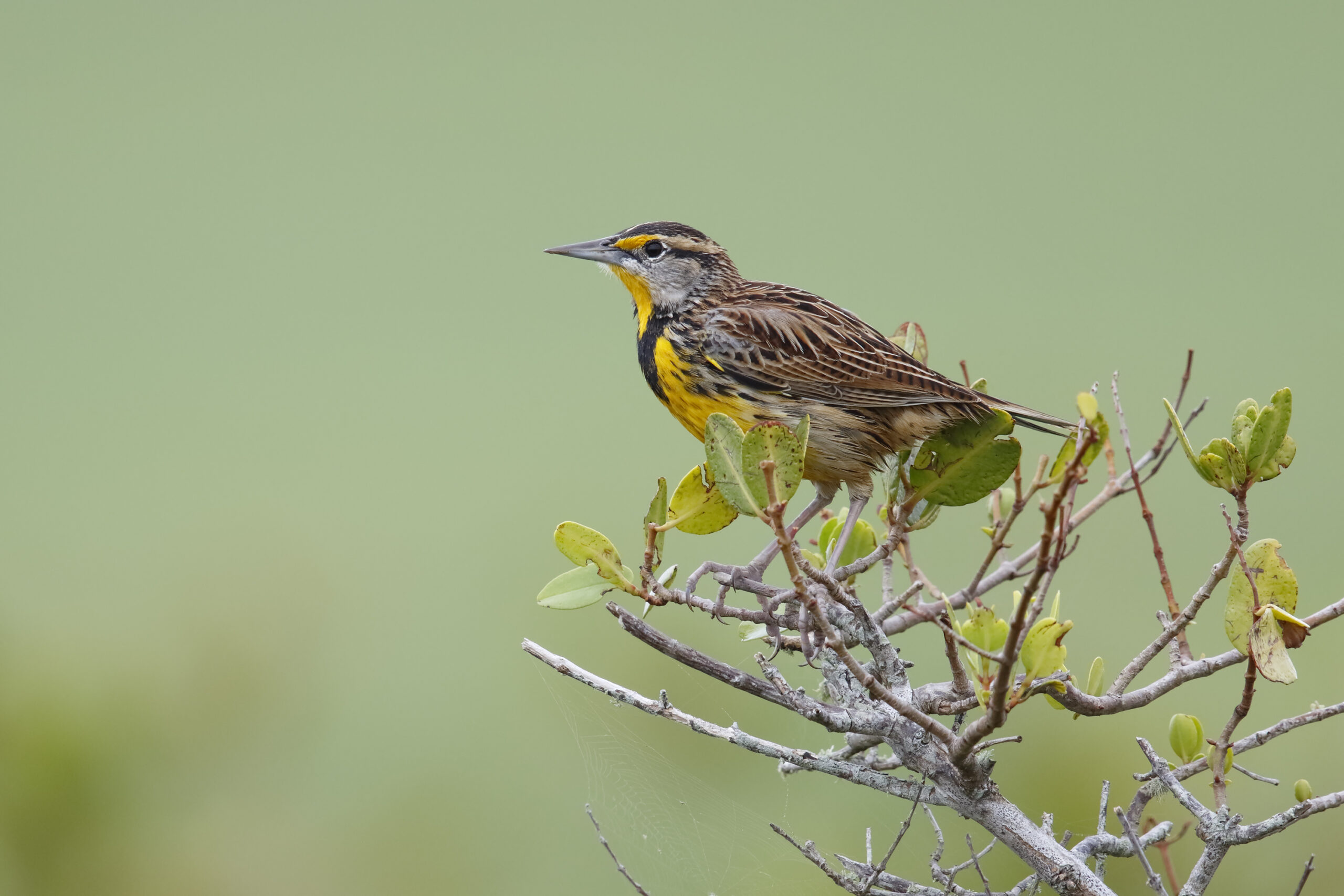 | Eastern Meadowlark |
 | Brown-Headed Cowbird |
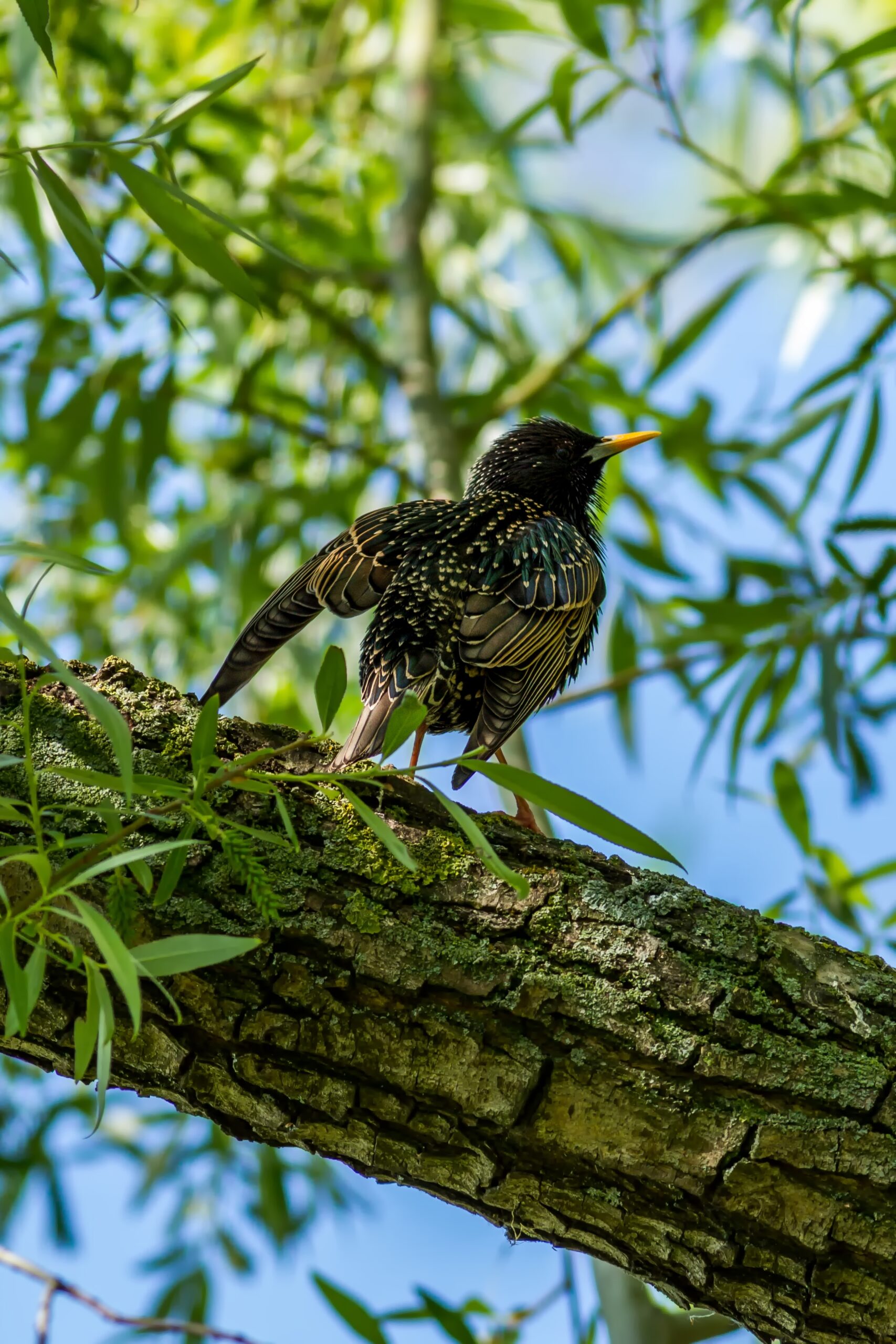 | European Starling |
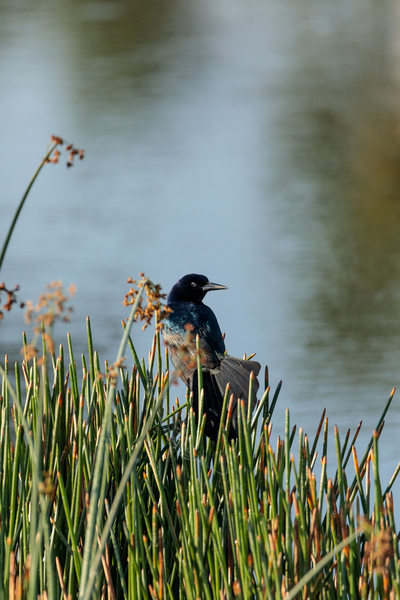 | Boat-tailed Grackle |
 | Bobolink |
 | Orchard Oriole |
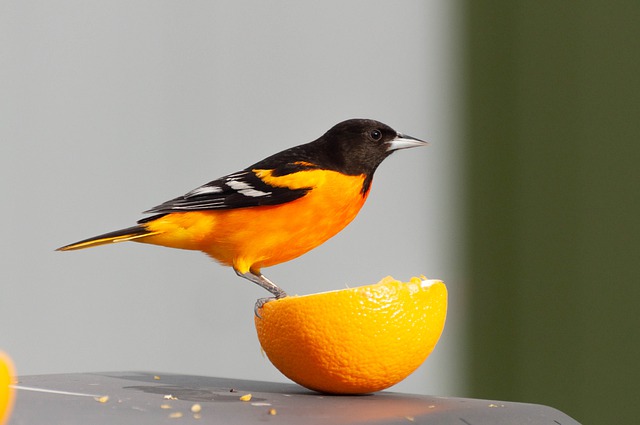 | Baltimore Oriole |
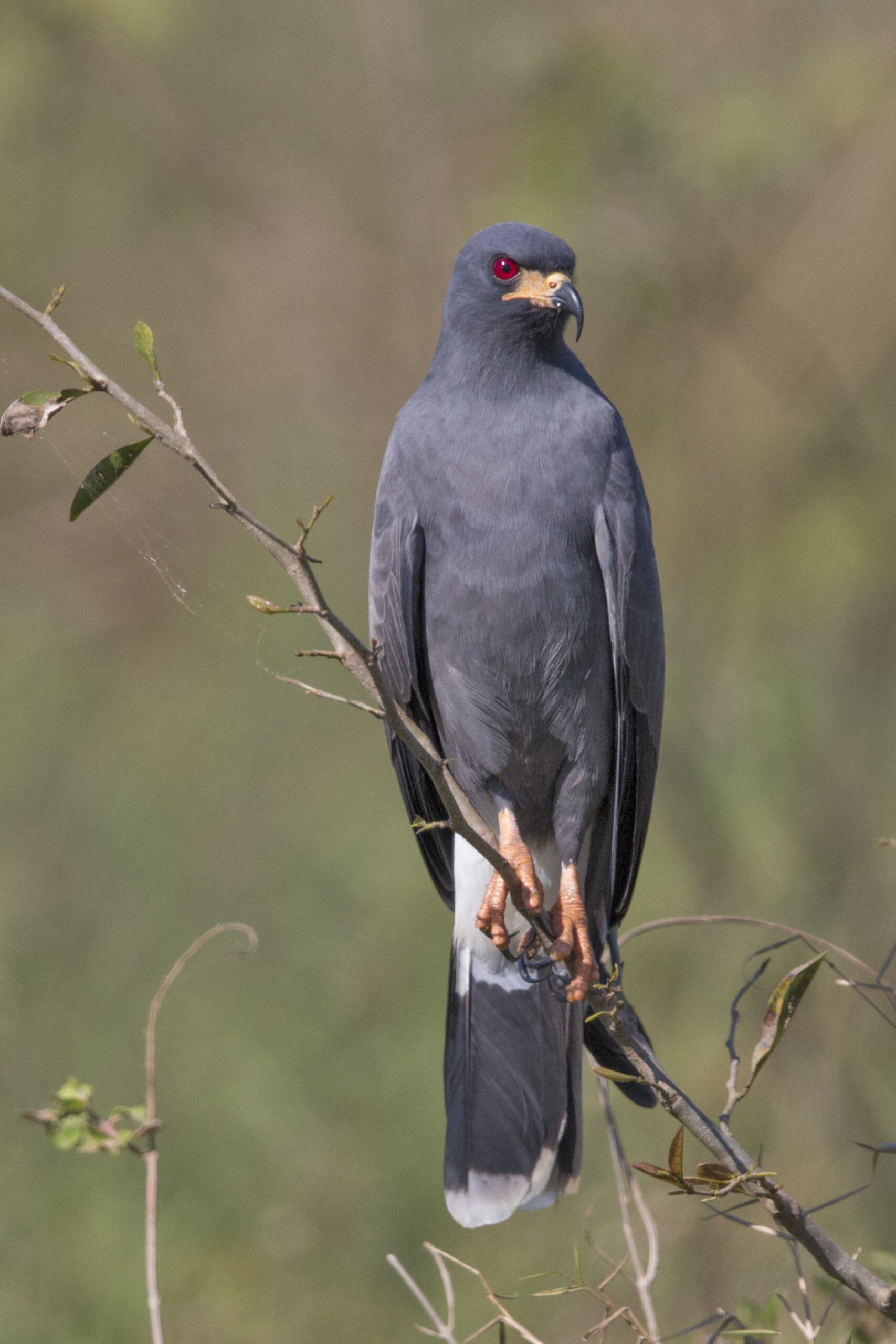 | Snail Kite |
 | Spot-breasted Oriole |
Types of Black Birds in Florida
1. Red-winged Blackbird
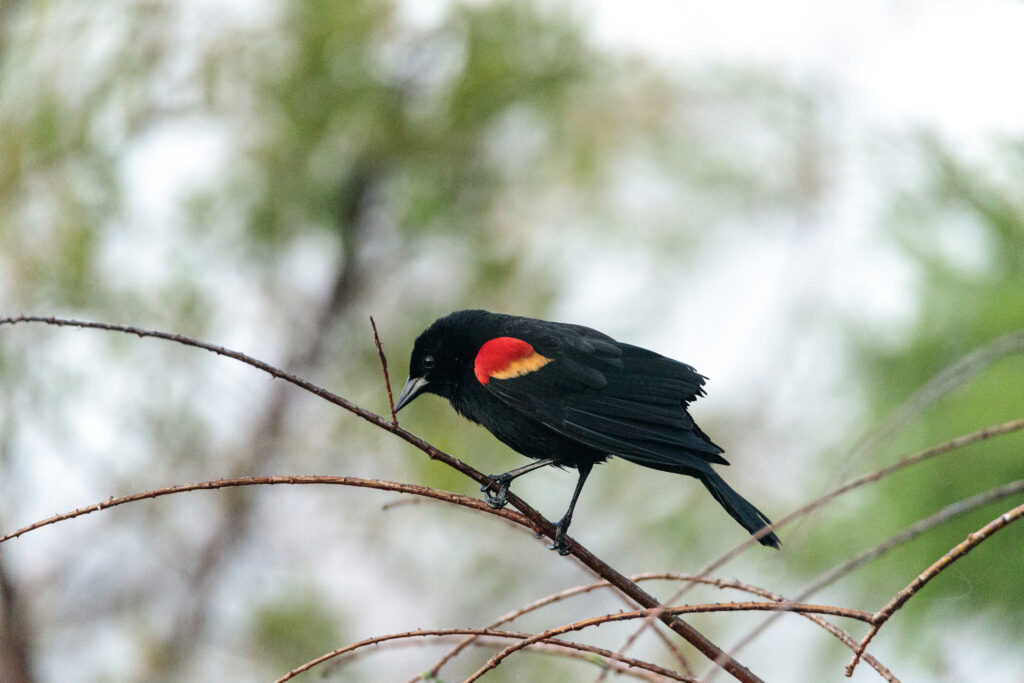
The Red-winged black bird is now the only real blackbird species that can be found in its natural habitat in North America.
The mature male possesses black feathers with prominent red and yellowish shoulder patches, whereas the adult female is mostly dark brown in coloration.
These birds are most often seen in the vicinity of freshwater wetlands and marshes, which is also where they construct their nests, in thick foliage that is situated rather low to the ground.
A frequent resident of Florida’s marshes and marshy places is the red-winged blackbird, also known as the red-winged blackbird.
These birds not only reduce the bug populations but also assist the spread of the seeds of the plants they consume.
In addition, at the time of year when they are nesting, bird observers may hear their unique song all over the state.
The number of Red-winged blackbirds has been decreasing over the last several years as a direct result of habitat destruction and fragmentation, despite the fact that the species is not officially listed as endangered or vulnerable.
As a consequence of this, it is critical to preserve these habitats in order to ensure the continued success of these species across Florida.
2. Smooth-Billed Ani

The Smooth-billed ani has a broad neck, an extended tail, and a large-sized bill having a significantly raised peak near the top jaw, all of which contribute to the common misconception that these birds are grackles.
The Caribbean is home to this native bird of the south, which also makes frequent stops in southern and central Florida.
Its range extends into the Caribbean.
It has a strong preference for inhabiting brushy terrain and may often be seen perched on snags, fences, and other types of various vantage points.
This bird has a gorgeous glossy black profile that really stands out.
The Smooth-billed Ani is characterized by its constant association with other birds of the same species as it travels through shrubby habitats.
The majority of its diet consists of fruits, lizards, and insects, particularly in the warmer months of the year.
Several groups cooperate to complete a wide variety of activities.
In point of fact, all of the eggs laid by the females are placed in a single nest that is used by all of the birds.
The call of these birds is similar to that of a hawk.
The Smooth-billed Ani prefers habitats with thick undergrowth next to semiopen pastures, wetlands, or meadows.
You could discover one of these birds there.
When one member of the flock takes flight to find food, the other members of the flock take a rest on a lofty perch and keep an eye out for possible threats and predators.
This bird has a fairly feeble flight, but it walks very well and forages on land the vast majority of the time.
3. Brewer’s Blackbird

The Brewer’s black bird is one of the real blackbird species that may be found naturally in North America.
The Brewer’s black bird is a darkish, stocky bird having golden eyes and a long, pointy beak.
It was given its name in honor of the American Ornithologist Thomas Mayo Brewer, who worked throughout the 19th century.
Both sexes have similar appearances, with the exception that males are often bigger than females.
These birds are distributed throughout the state of Florida across open woods, grasslands, and marsh areas, although they are not very numerous in the state.
They are able to be spotted most frequently throughout the day, either hunting for food on the soil or perching themselves on the limbs of trees.
During the time of year when they are able to produce offspring, Brewer’s blackbird builds its nest in tree holes or on cliffs.
Both of the bird’s parents take turns tending to the hatchlings and incubating the eggs.
If you’d like to spot Brewer’s blackbird throughout Florida, the ideal time to go on a search is in the summer and spring months, which are the times of the year when they are usually active.
4. White-crowned Pigeon

The White-crowned Pigeon would be a big pigeon that is fully blackish-grey in color, with the exception of a white cap that stands out against the rest of its body.
Don’t be fooled by its name.
Its bill and neck are pink in hue, and it has a striated pattern on its neck.
The adults have scallops that are iridescent greenish and are positioned on their necks.
These scallops are rather hard to see unless you are in very close proximity to the adult.
This huge dove is restricted to the southern tip of Florida, more specifically, the Everglades and the Keys, where it may be found.
The White-crowned Pigeon is mostly found in the Caribbean; however, its population in the United States is severely limited.
It is most often seen in regions that are heavily wooded and have an abundance of plants that provide fruit, such as berry bushes.
Nevertheless, they almost always choose to conceal themselves in the surrounding vegetation, which makes it difficult to see them.
This bird has a reputation for being timid towards humans. As a result, while flying, they are most often observed either in couples or in small flocks.
Because of its capacity to glide for up to 50 kilometers, there is little question that it is a swift flyer.
In addition to this, it regularly engages in extended periods of flight over the ocean.
5. Rusty Blackbird
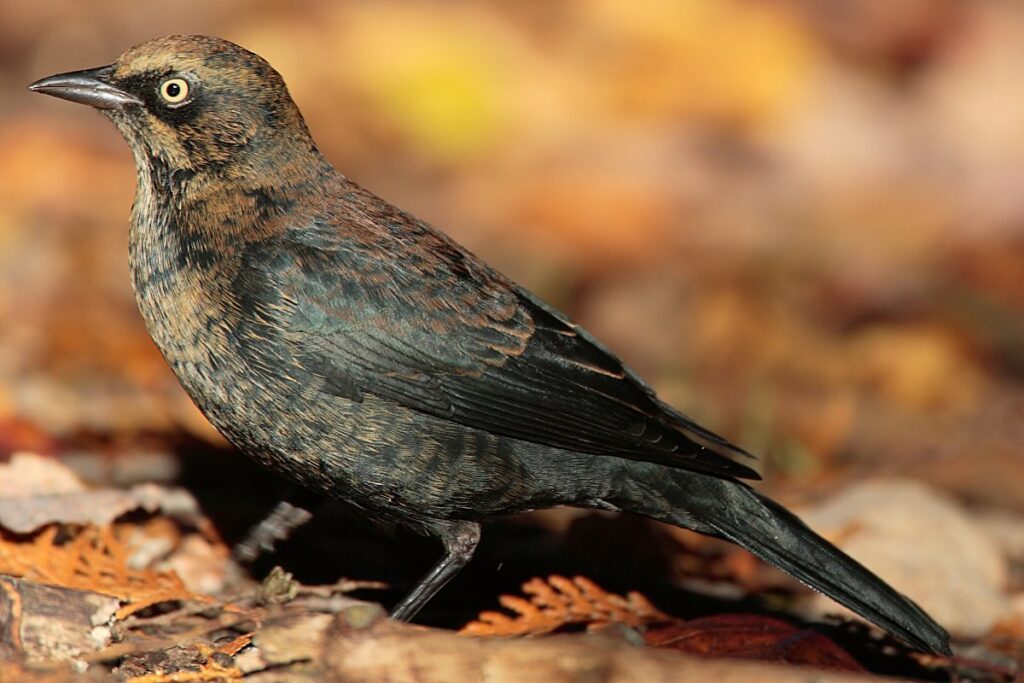
Rusty blackbirds are a species of blackbird that gets its name from the rusty brown coloration of their plumage.
This hue is noticeable all during the winter season.
During the mating season in the summertime, the male bird has feathers that are glossy black with shades of purple and green, whereas the female bird has feathers that are identical but duller.
The Rusty blackbird is an endangered species in the state of Florida.
The number of these birds is falling in part as a result of the disappearance of their natural habitat, which is comprised of wetlands.
Throughout Florida, you may find them in the freshwater wetlands and marshes from the end of autumn until the beginning of spring.
The months of December through February are ideal for seeing them during this period.
During this period, they may often be spotted feeding near the margins of lakes and marshes in small groups.
Even though they are not now recognized as being in danger of extinction or threatened with extinction, their population sizes have dramatically shrunk over the last several decades.
Because of this, there are now initiatives to assist with the protection of this species.
6. Common Grackle

The Common grackle is a bird that may be encountered in various locations in North America.
Throughout Florida, the months of spring and autumn are the times of the year when you are most likely to see one.
In most cases, the ideal time to watch them is somewhere around dawn and dusk, when they are most active in terms of eating.
In Florida, you’ll find the greatest concentration of these birds in forested regions that are in close proximity to wetland habitats.
They consume many different kinds of fruits, seeds, and tiny insects as food.
The head of an adult Common grackle is an iridescent blue color, and it possesses a long, black beak, light yellow eyes, and a longer tail. Iridescence is typically seen on the skulls of males.
Despite the fact that they are not recognized as a threatened species, their population size has shrunk over the last many years as a direct result of habitat destruction and degradation.
Thankfully, events such as the Great Backyard Bird Count has contributed to increasing people’s awareness of these interesting animals and the critical role they play in maintaining the health of the environment.
7. Eastern Meadowlark
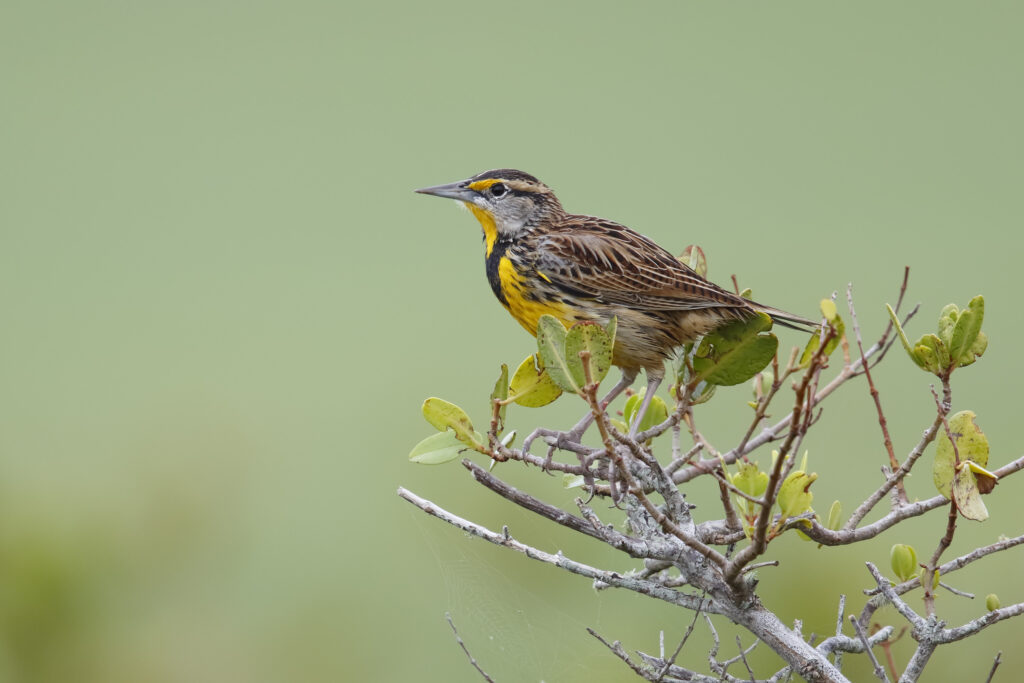
A stunning songbird, the Eastern meadowlark may be spotted in the eastern states of the United States.
The majority of sightings have been reported from the central and northern parts of the Sunshine State.
This species of meadowlark is quite similar to the Western meadowlark.
It has bright yellow underparts that are edged with a black ‘V’ on the breast.
The top body, wings, and head are brown, and there are black streaks throughout.
They can be observed at any time of the year, but during the springtime, it is extremely simple to find them nesting.
The early morning and late evening hours, when they are most likely to be out and about looking for food, are the ideal times to look for them.
The vivid yellow breast of the Eastern meadowlark and its unusual singing make this bird a welcome visitor in the backyards of Florida homes.
Take some time to appreciate this gorgeous bird if you’re ever in the position to see one in person.
8. Brown-Headed Cowbird

A little bird that is slate black overall and has a chocolate brown head is known as the Brown-headed cowbird.
Females are distinguishable from males by their duller appearance and significantly smaller size.
The Brown-headed Cowbird may be found in many regions of North America, including the eastern United States, portions of Mexico, and Canada.
Throughout the state of Florida, you will find the greatest concentration of them in the state’s north and center.
Brown-headed cowbirds tend to congregate in groups of 10 to 21 individuals; however, studies have seen communities of as many as 100 individuals.
Because they are frequently spotted in the vicinity of grasslands and cow pastures, they are known by their popular name.
The months of summer and spring across Florida are peak breeding seasons for brown-headed cowbirds, making those seasons the greatest times to watch these birds.
They don’t really make their own nests and are not responsible for the care of their young.
They do this by laying their eggs within the nests of many other species, like the Eastern bluebird, for example.
9. European Starling
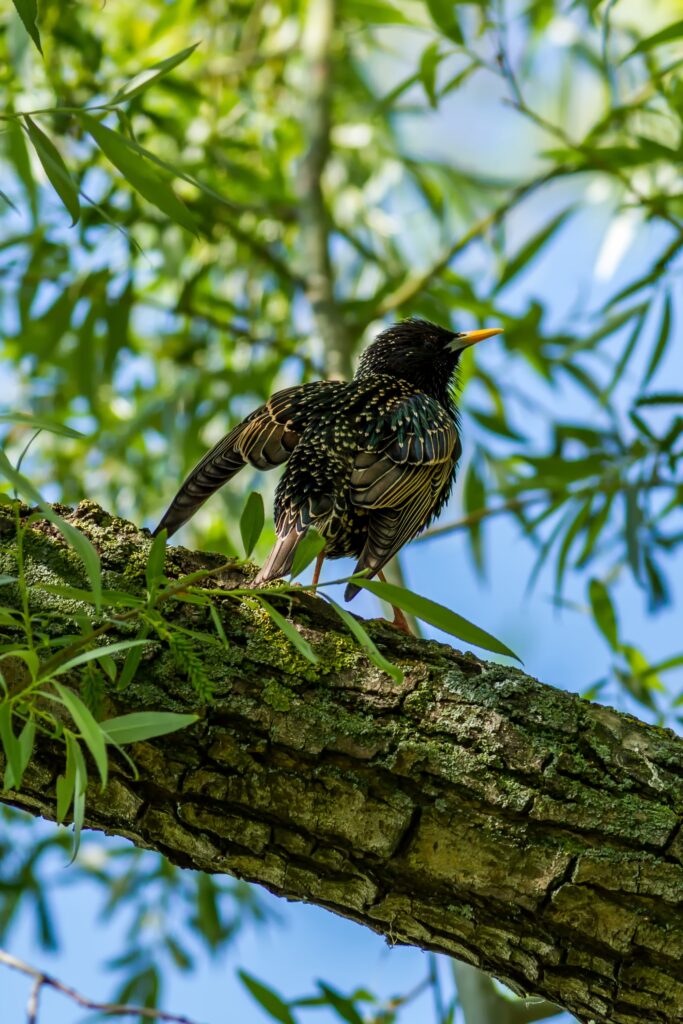
The European starling is a tiny, stocky bird having black plumage and bright eyes. Its name derives from its appearance.
The state of Florida is home to a large population of these birds throughout the year.
On the other hand, they are at their most active throughout the months of summer and spring.
Starlings from Europe are friendly birds that often migrate together in large, loud groups.
They are most often seen in wooded areas and open fields, where they construct their nests on the branches of trees or shrubs.
These birds have a varied diet that includes not only insects but also seeds and fruits. They are omnivores.
Because of their aggressive nature and their loud cries, European starlings are regarded as a nuisance species in the state of Florida.
Nevertheless, these species play a vital part in the environment because of the function they serve in regulating the number of insects.
10. Boat-tailed Grackle

The Boat-tailed grackle is a huge blackbird that has a shiny appearance and a long tail that is fashioned like a keel.
Grackles are often found in woodland settings that are close to bodies of water and are especially prevalent in the state of Florida.
The birds are quite engaged in the early morning and evening, and during these times, one may frequently spot them searching for food in the trees or engaging in playful competition with one another.
During the time of the year when they are trying to mate, the males engage in a complex wooing ritual that consists of fluffing out their plumage, shaking their heads, and producing a clicking noise using their beaks.
The Boat-tailed Grackle is a common bird found all across the state of Florida and may be observed at any time of the year.
Their conduct in the state is distinct from how they act in other parts of the country.
In many other regions, they are only found around the ocean, but in Florida, they have evolved to live in metropolitan areas farther inland.
11. Bobolink

The Bobolink is a stunning bird with a black-and-white color scheme, but it is becoming more and more uncommon across Florida.
The songs of these birds are easily recognizable because of the wide range of whistles, snaps, and sounds that are included in them.
Males are mostly black, although they have a yellow spot at the base of their skulls, whitish shoulders, and lower backs.
The females have a light brown color with black stripes running down their backs and down their flanks. In addition, their tails and wings have a deeper color.
The male Bobolinks will sing from nests high in trees in order to lure females, and they will frequently actively defend their territory.
The central and northern regions of Florida are among the most likely places to see a bobolink during a visit to the Sunshine State.
Because they are birds that migrate, the ideal times of year to watch them are during the spring and autumn months.
Nevertheless, there are Bobolinks that overwinter in Florida year after year.
If you are fortunate enough to get a glimpse at one of these birds, you will be in for an unforgettable experience.
12. Orchard Oriole

The Orchard oriole and the Baltimore oriole are two species of tiny songbirds that are closely related to one another.
The plumage of the Orchard oriole is far more golden than black, and the bird is much thinner than the Baltimore oriole.
It may be spotted all the way from Minnesota through Maine in the eastern part of North America.
The bill is slender and dark, and there is a faint hint of blue-gray coloration at the bottom of the lower jaw.
The mature male has a chestnut shoulder, underbelly, and rear, but other than that, he is all black, such as the darker portions of his wings.
Olive green may be seen on the top portions and chest of both the adult female and the juvenile, whereas the underparts are a dark color.
The areas of central and northern Florida in the state of Florida are where you are most likely to see an orchard oriole.
The months of April through July in Florida are prime viewing months for Orchard Orioles since this is when the birds are nesting.
Male Orchard Orioles are especially noticeable at this time of year because they sing from the tops of trees in an attempt to entice females.
At other seasons of the year, you are more prone to see Orchard Orioles in woods and forests rather than in orchards.
On the other hand, they are also likely to visit playgrounds and gardens in their hunt for food.
Therefore, if you’re really fortunate, you could be able to see an orchard oriole directly in the garden of your home!
13. Baltimore Oriole

The Baltimore oriole is a gorgeous and easily recognizable songbird that may be seen all around Florida.
The brilliant orange and black feathers of these birds, as well as the white wing bands on their black wings, make them quite easy to identify.
They are more often observed in forests, which contributes to their popularity among those who want to go birdwatching.
The months of summer and spring across Florida are the times of the year with the highest probability of seeing Baltimore orioles.
On the other hand, in some southern regions of the state, you may see them throughout the whole year.
The frequency of Baltimore orioles that spend the winter visiting Florida has been increasing rise in recent years, making it more likely to come across one of these birds when in the state at this time of year.
Keep your eyes open for these gorgeous birds the next time you’re out in nature; it doesn’t matter whether you’re a casual wildlife photographer or a devoted one; you won’t want to miss them!
14. Snail Kite
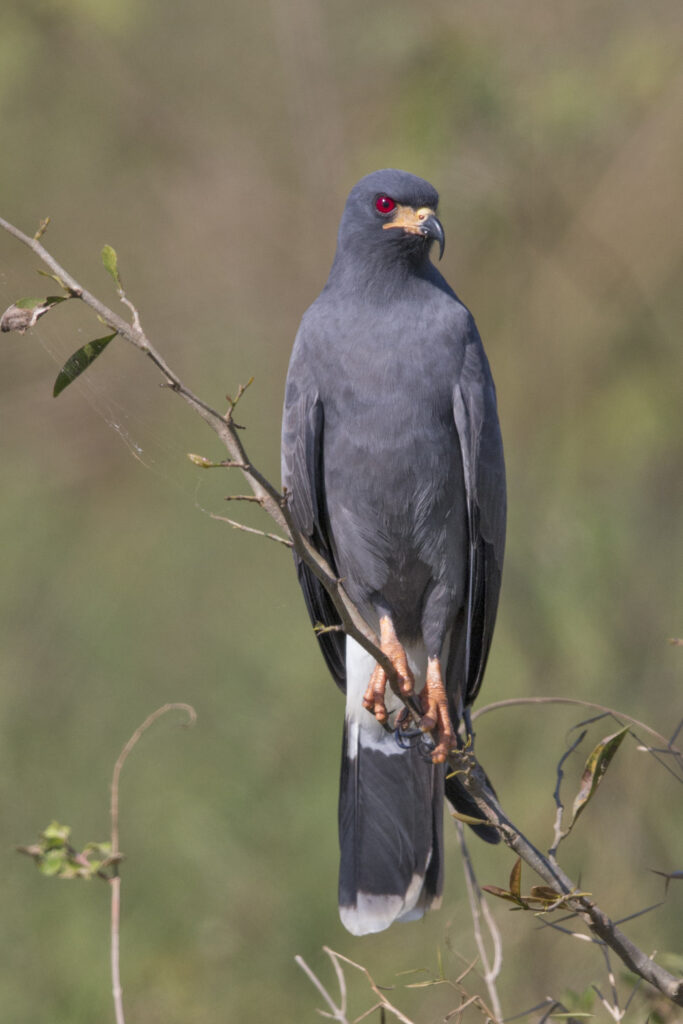
The Snail Kite is exclusively found across Florida, making it the sole state in the U. S. in which it can be seen.
This extraordinary raptor has deep feathers and a beak that is highly hooked, which is excellent for scooping into big snails, which represent the majority of this creature’s meal.
These animals have evolved very well to gorge themselves on the Apple Snail that may be spotted in the state’s marshes.
This bird is about the size of a pigeon and has a pair of broad wings that look like paddles coupled with a large tail.
It also has extended legs and a thin beak.
Adults have a body that is darker grey than black, wings that are much darkest, and a black tail that tapers down into a white base.
The skin around the beak of males is pinkish-red in color.
The females are easily distinguished from the males by their somewhat darker coloring and the presence of white plumes around their faces.
You may keep an eye out for the Snail Kite in the wide wetlands and tropical marshes of Florida, where it is known to reside, and observe as it glides gently over the sawgrass.
In contrast to other species, this particular bird finds eating snails to be a very satisfying meal; thus, it is not obligated to maintain a high rate of flying.
It makes fantastic use of the sharply curved beak it has in order to extricate the tasty prey from inside the shell.
The majority of snail kites are found in colonies, where they sleep along with other types of waterbirds, like herons and anhingas.
15. Spot-breasted Oriole

The Spot-breasted Oriole is a stunning kind of bird that can only be seen across Florida in isolated areas.
They are typically observed during the summer and spring months; however, they are present all year round in some regions of the state.
Wooded regions, locations close to bodies of water, as well as gardens and parkland, are often the best places to look for them.
This songbird is easily identifiable because of its brilliant orange coloring and black markings on its wings, bib, and chest. It is a medium size bird.
The genders are identical, except females and juveniles are missing black on their faces and sport a dark greenish stripe running down the back along the tail.
It is fascinating to note that this species doesn’t really exist natively in this location.
The Spot-breasted Oriole is a bird that is native to Central America, although it was first brought to Miami in the 1940s.
According to the American Birding Association, even though Florida is the only state across North America to have a relatively small population, the state nevertheless has enough birds for it to be counted.
Conclusion
In conclusion, Florida is home to a diverse range of black bird species, each with its unique physical characteristics, behavior, and habitat.
From the striking appearance of the Rusty Blackbird to the melodious song of the Baltimore oriole, black birds in Florida offer a range of beauty and ecological significance.
Whether you are a seasoned birdwatcher or simply appreciate nature’s beauty, exploring the state’s black bird population is a must-do activity.
Understanding and appreciating these species will help us to protect and conserve their habitats, ensuring that future generations can enjoy their beauty and ecological importance.
FAQ
Typical black birds in Florida include what species?
This huge, shiny blackbird is known as the Boat-tailed grackle because of its distinctive long, keel-shaped tail. Grackles are prevalent in Florida’s forested environments near the water.
What are those loud black birds throughout Florida?
Male Boat-tailed Grackles will make loud, showy displays that include flapping their wings and calling harshly over and over again while the females sit quietly on the nest.
Extremely frequent when found; in recent decades, it has expanded its breeding area to include the northern Atlantic coast. In addition to coastal and interior landscapes in Florida, you may find salt marshes there.
Last Updated on March 22, 2023 by Lily Aldrin
